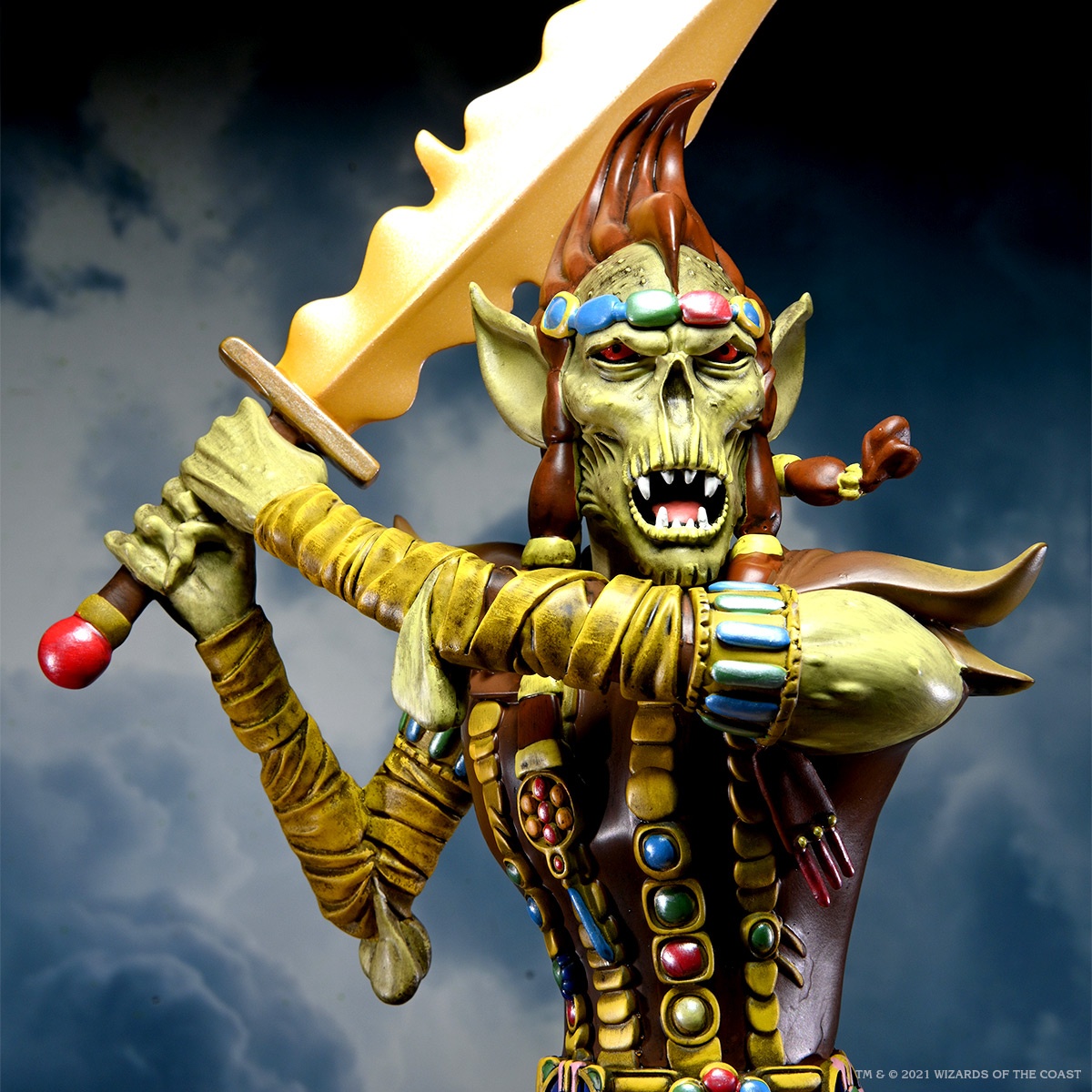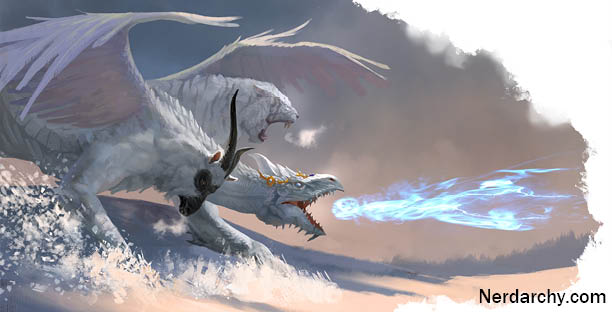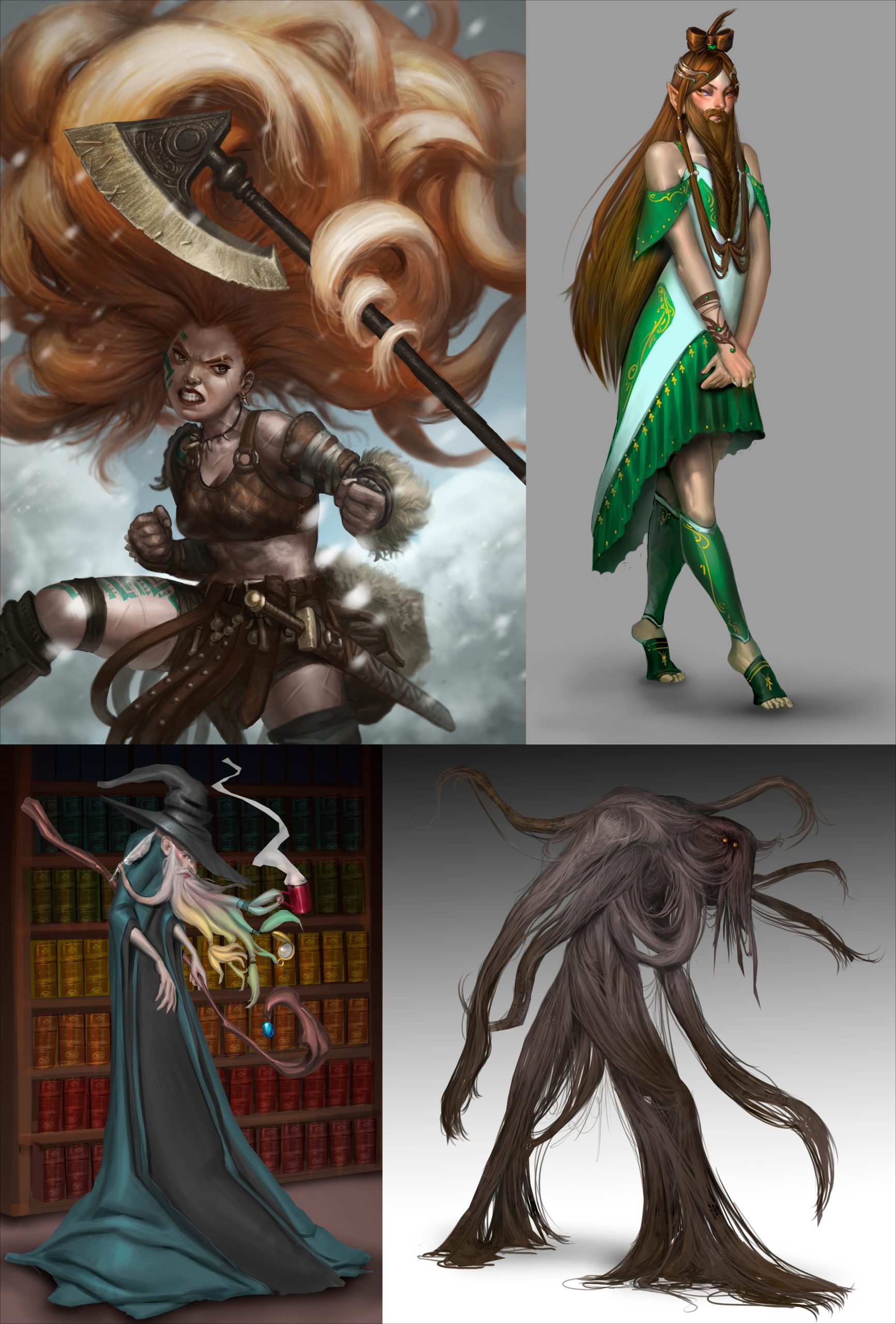
Out of the Box D&D Encounters, Series 2, #28 – “Crackpot”
December 29, 2017
Out of the Box introduction
It’s always important to read every detail in a description of any monster or environment. The notes, flavour text, or even the spell descriptions can hold clues to running a given encounter in a completely different way. In the past, I have discovered little facts about hags that have completely altered my campaigns, and they are but one monster. This trick is no real trick – it’s just taking the time to read the fine print.

A flameskull as seen in the fifth edition Dungeons & Dragons Monster Manual. [Image courtesy Wizards of the Coast]
Hold fast, ye doubters! Consider that mage hand is not only a cantrip (so it’s activation is at will, and therefore takes no slots), but it also allows for a certain level of utility going potentially unnoticed, and might be used in very deceptive ways. Rogue (Arcane Trickster) characters may understand this, but in terms of how they use it against others, perhaps not as how others might use it against them personally.
This sort of thought dynamic is important for Dungeon Masters to understand, for many players may always think the methods they use are their property – and that just isn’t the case. Some players might cry foul at this reality, whereas others will adapt.
Getting back to the mage hand cantrip, this simple tool will give the flameskull the ability to portray itself as something it is not. I know this for a fact because I used this very encounter at my own table, and my low level players all but soiled their drawers when they saw it unfold. Consider that mage hand, although infinitely renewable, has a weight limit of 10 pounds. Robes weight 4 pounds. Conceivably some sort of coat hanger with false shoulders made from lightweight materials like thin wood or whatnot could easily weigh under 6 pounds. Maybe less.
Therefore, a flameskull could float about with this fake “body on a coat hanger” below it almost indefinitely, and certainly for the length of the encounter. Now you have an undead taking on a lich-like appearance (or other undead), leaving your characters guess as to what they might be fighting.
Environment
Dungeon/Ruins
Level
4
Description
The door to this room will be closed as the characters approach. Its heavy wood timbers will be bound by thick iron bands. These bands will be engraved with what appear to be a series of skeletons reclining, each with their hands grasping the feet of the next skeleton in line…as if to form a long skeletal chain.
A brass plate, roughly 1 foot square, is bolted to the door. It reads in Common:
“The Master’s Laboratory – Entrance is FORBIDDEN.”
A brass door latch awaits those who risk entry.
For those who wish to investigate the entry further before proceeding inward, the following checks should provide some help. A successful DC 15 Wisdom (Perception) check will reveal the faint metallic odour of ozone beyond the door, as well as a rhythmic sound of buzzing. For those interested in checking the door latch for traps and such, a successful Intelligence (Investigation) check will reveal no traps. A detect magic spell (Players Handbook, page 231) will show the door glowing with a faint magic aura, and if they choose to use a further action, they can determine the presence of Illusion magic. A dispel magic spell (Players Handbook, page 234) will end this effect.
Otherwise, anyone who touches the latch (including during an Investigation check, should the player or DM decide), a magic mouth spell (Players Handbook, page 257) will activate and state the following, very loudly:
“What is the meaning of this intrusion!? Can you not read?! Entrance is forbidden!! Such poor manners! Begone peasants! You risk the wrath of BEEEEEEEP!”
Should the magic mouth actually trigger, the resident of the room will no longer be surprised. The door is, in fact, unlocked at this time, and opens easily. The door, when opened, reveals a room filled with tables and shelves filled with odd equipment. The door enters into the centre of a 30 foot wall, and extends 40 feet away. The floor is stone, but very smooth, and the ceiling is 20 feet high and slightly arched.

A lich as seen in the fifth edition Dungeons & Dragons Monster Manual. [Image courtesy Wizards of the Coast]
However, at this time, it is obviously moth eaten and threadbare. Mould is likely the only thing holding it together, and its image is so damaged it is hard to discern whom the portrait might be of (either a successful DC 20 Intelligence (History) or Intelligence (Investigation), revealsl the identity of the wizard as “Lotholgar the Mad”, a long dead wizard who died in a mysterious explosion…or other mishap determined by the DM). The corroded brass rail upon which it hangs is saved from collapse only from the large holes in the tapestry, saving weight.
The floor is painted in a wild series of arcane runes and formulas (Success on a DC 12 Intelligence (Arcana) check reveals its an unfinished spell formula. With a check of 20 or higher the character knows it’s full of errors and will never work. The actual result of the formula is the DM’s discretion. However, checks over 20 will also reveal the formula is fundamentally flawed.)
In the centre of each 40 foot wall is a 10 foot tall conical device resembling a coil of corroded copper cable around an iron post, capped with a 1 foot diameter metal ball. Each device is 3 feet in diameter at its base, and attached to the floor by it’s central iron post. The smell of mildew in the room is only surpassed by the smell of ozone inside the room.
Two tables, each 4 feet wide and 8 feet long sit kitty-cornered in the two far corners of the room, each with an unknown object or figure covered in a dirty white sheet. A large 10 foot wide table dominates the centre of the far wall. It has attached shelving raising another 10 feet upward, all covered in clear flasks and bottles filled with various colours of fluid. A small brazier heats a large glass bowl of fluid which bubbles and froths angrily, the steam of which is then fed a series of tubes and coils to end in a smaller bottle.
However, all of this pales compared to the resident of this odd place. A figure hovers slightly over the floor. Appearing easily 6 feet tall, its flaming skull creates an odd glow over the working end of the laboratory. No neck leads downward to the long blue robe flowing to the floor. No feet can be seen. Despite the oddity of this, at first the head begins to turn, then the rest of it. Eyes lit with red points of light peer at you.
Echoing the sentiment of the magic mouth on the outside of the door, he then commands:
“Who dares disturb the work of the master?! Suffer the wrath of Lotholgar the Wondrous!”
This creature is a flameskull, (Monster Manual, page 134) mad and deluded into believing he is indeed, the master of the laboratory. To perpetuate his delusion, he uses his mage hand cantrip to suspend a hanger upon which hangs one of his master’s tattered robes. On his initiative, he will start with his blur spell (Players Handbook, page 219), followed by fireball (Players Handbook, page 241-242). He is immune to fire, so he can certainly cast this at point blank range. Should his concentration be broken with regard to the blur, he will follow with flaming sphere (Players Handbook, page 242), which he’ll use to chase the players around the room, and likely a series of magic missiles (Players Handbook, page 257) the round after while the flaming sphere is still creating havoc.
The fact that this room will likely become a conflagration will not occur to him until late in the combat, for which he will blame the PCs with curses and threats for “destroying his work.” Should a table, bookshelf, or any devices catch fire (which, based on the Ignition property of magical fire spells, is automatic for items not worn or carried), any PC within 5 feet of it risks 1d4 fire damage should they fail a DC 10 Dexterity saving throw.
The whole of this will be chaotic, and the “False Lotholgar” flameskull will cackle madly the entire time, reveling in the flames. The PCs had best dispatch him quickly, or the resulting conflagration could result in some serious casualties. With the DM’s discretion, the lab door might remain open to allow an escape. Or, if the DM requires the danger be ramped up, its wooden nature includes it in any concerns with ignition as well, making escape through it a risk of the additional 1d4 damage listed above.
Should the PCs dispatch him quickly before the entire room catches on fire, they can examine the surviving contents. The books and scrolls on the bookshelves are filled with a wide array of mad ravings and theories on magical formulas and processes. Most of it is folly, discerned through a successful DC 15 Intelligence (Arcana) check, but those who take the time to search all of them (a full two hours, divided between however many trained in Arcana wish to do the work) and succeed on a DC 15 Intelligence (Arcana) check, two scrolls – animate dead and magic mouth – will turn up, stuffed in among all the rest of the nonsense.
The two strange coils will remain inert unless someone touches them with bare flesh or with something metal. If that happens, the devices will have a 50 percent chance of activating and creating an arc of lighting between them. This arc will be a half-strength lightning bolt (DC 12 Dexterity saving throw, 4d6 lightning damage, half on a successful save). “False Logoltar” may be resistant to this form of damage, but is certainly not immune, and may wander into the arc if properly lured.
The two tables at the far end of the room are covered in long-mummified severed body parts that look like they were poorly assembled and never properly preserved. Because of the neglect and damage, it will take a successful DC 17 Intelligence (Nature) check just to recognize these might be human remains.
The experiment at the back is also a failure, and any attempt to drink the fluids at the back (any of them) will require success on a DC 14 Constitution saving throw, with failure causing 2d10 poison damage. The lab equipment, if preserved, however, will act as alchemist’s tools, and contain some rare pieces that would sell for 10 times the normal price (500 gp). (Anyone proficient in such tools would recognize this fact).
Monsters
“False Logolthar” – flameskull – as per Monster Manual, page 134
Treasure
Possibly rare alchemist’s Tools (500gp), spell scroll of animate dead, spell scroll of magic mouth
Complications
There are a lot of truly dangerous things in the room – not just the flameskull. “False Logolthar’s” penchant for setting things ablaze could lead to a lot of fire damage around the room, the “Jacob’s ladders” could certainly be a problem, and drinking poison is no treat. This damage can add up in a big hurry, so it’s up to the DM whether such additional damage (ignition, Jacob’s Ladder, poison) get added on or not. Feel free to pick and choose which happen and when where necessary, and even allow the door to be blasted or burned away to permit an escape route if you need to.
[amazon_link asins=’B005MUB6FQ,B017NUFKFE,0786966114′ template=’ProductCarousel’ store=’nerdarchy-20′ marketplace=’US’ link_id=’44884df8-eb3f-11e7-a5ed-333b1acd7f60′]









No Comments